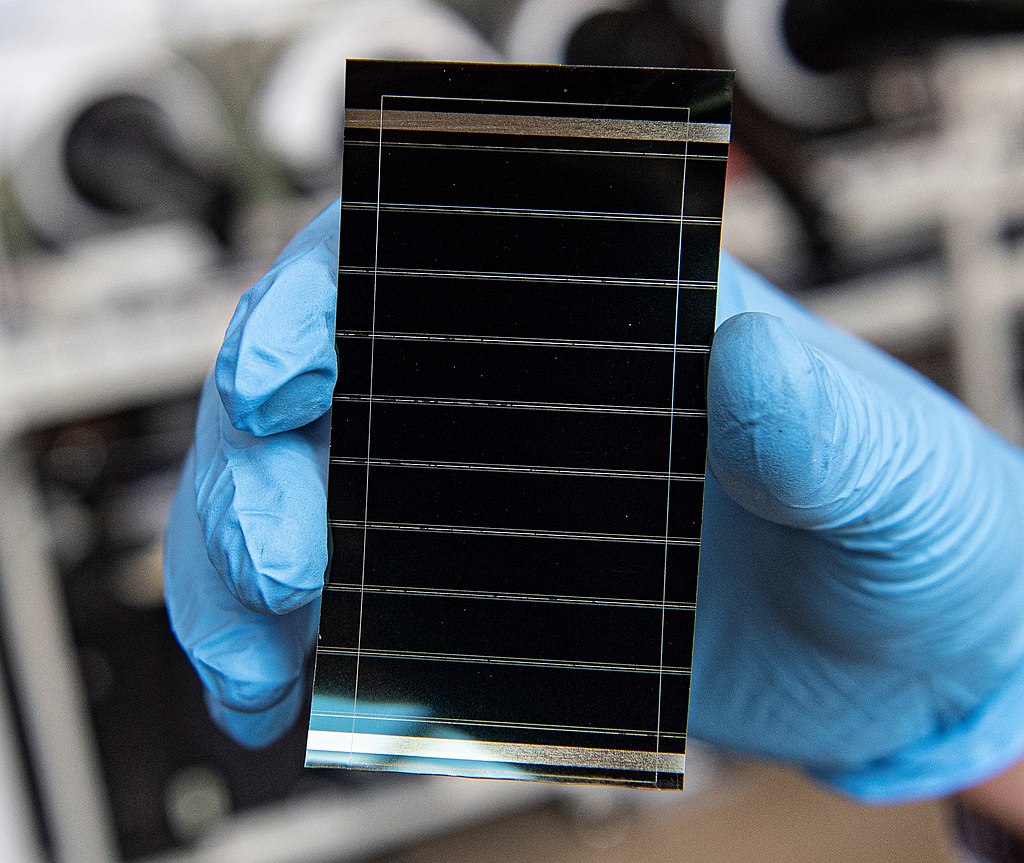Researchers at the U.S. Department of Energy’s National Renewable Energy Laboratory (NREL) used a circular economy framework to determine how to scale, deploy, and design future metal halide perovskite solar panels to be easily recyclable.
As initiatives to commercialize metal halide perovskite (MHP) solar technology are underway, especially efforts to ensure durable performance in the field, NREL researchers initiated a study of sustainability design factors as another important aspect of commercialization.
“Our goal with this perspective paper was to point out that existing technology does not prioritize building products with sustainability and circularity up front. It was not developed specifically to minimize waste or use the lowest energy processing steps,” Joey Luther, the research’s corresponding author, told pv magazine. “However, since PV is inherently a sustainable technology, now is the time to begin to evaluate how we can develop the commercialization of MHPs with sustainability in mind.”
The group performed the evaluation based on a a prototypical single-junction MHP module close to commercial designs, framed with mounting rails in a glass-glass module configuration with polymer encapsulants, and edge sealing typical of silicon and cadmium telluride panels. The individual PV cells are integrated via scribing, and include front glass coated with a transparent conductor, the MHP layer sandwiched between electron and hole transport materials and a back electrode.
In addition, the team drilled down into constituent chemicals, molecules, and materials typically used in perovskite A, B, and X sites.
For all of the above, sustainability aspects were evaluated, such as energy intensity of manufacturing, carbon intensity, rare mineral mining, recyclability, earth abundance, cost, fossil fuel derived, fail-safe encapsulation, health hazards, and flammability among others.
The prototype was further evaluated based on critical material concerns, embodied energy, carbon impacts and circular supply chain processes. The analysis included the frame, rail materials, front and back glass, encapsulation polymers, solvents, electron and hole transport materials, and electrode materials.
In an information-rich table, the team detailed how the eleven “Rs” of circularity for photovoltaics can offer opportunities and advantages within sustainable manufacturing. An adaptation of the “reduce, reuse, recycle” concept, some of the Rs discussed are listed here: refuse fossil fuels and carbon-intensive materials; reduce energy, material, and carbon input, repair or design for repair, reuse, repower, restore, and recover energy.
When it comes to recycling, the researchers noted that ‘recycling’ includes both downcycling to lower-value, or lower-quality, products. They explained that recycling is beneficial when recovered feedstocks replace virgin materials, which require energy-intensive refining. There is room for improvement. For example, PV glass manufacturing is still using virgin sources in new PV glass products and not post-consumer PV glass cullet, they noted.
The team identified five key areas and opportunities to pursue. The first is enhancing MHP module reliability to meet current commercial PV lifetime standards. Second, investigate the supply chain of low-trade-volume raw materials, such as cesium, and ensure adequate accessibility for the sustainable scale-up of a given MHP composition, or focus research, to reduce or substitute. Third, seek alternatives to indium. Fourth, explore how to accelerate PV glass recycling without downcycling. And fifth, further improve module remanufacturing processes.
“A reasonable combination of these solutions would enable MHP-PVs to contribute meaningfully and sustainably to the energy transition,” stressed the team.
The scientists asserted that “circularizing the PV supply chain, particularly through recycling and remanufacturing glass”, provides opportunities to lower the embodied energy and carbon of MHP-PVs. “Improvements in lifetime and reliability remain paramount for the energy transition and provide the largest benefits,” they concluded.
The perspective is detailed in “Sustainability pathways for perovskite photovoltaics,” published by nature materials.
This content is protected by copyright and may not be reused. If you want to cooperate with us and would like to reuse some of our content, please contact: editors@pv-magazine.com.








By submitting this form you agree to pv magazine using your data for the purposes of publishing your comment.
Your personal data will only be disclosed or otherwise transmitted to third parties for the purposes of spam filtering or if this is necessary for technical maintenance of the website. Any other transfer to third parties will not take place unless this is justified on the basis of applicable data protection regulations or if pv magazine is legally obliged to do so.
You may revoke this consent at any time with effect for the future, in which case your personal data will be deleted immediately. Otherwise, your data will be deleted if pv magazine has processed your request or the purpose of data storage is fulfilled.
Further information on data privacy can be found in our Data Protection Policy.